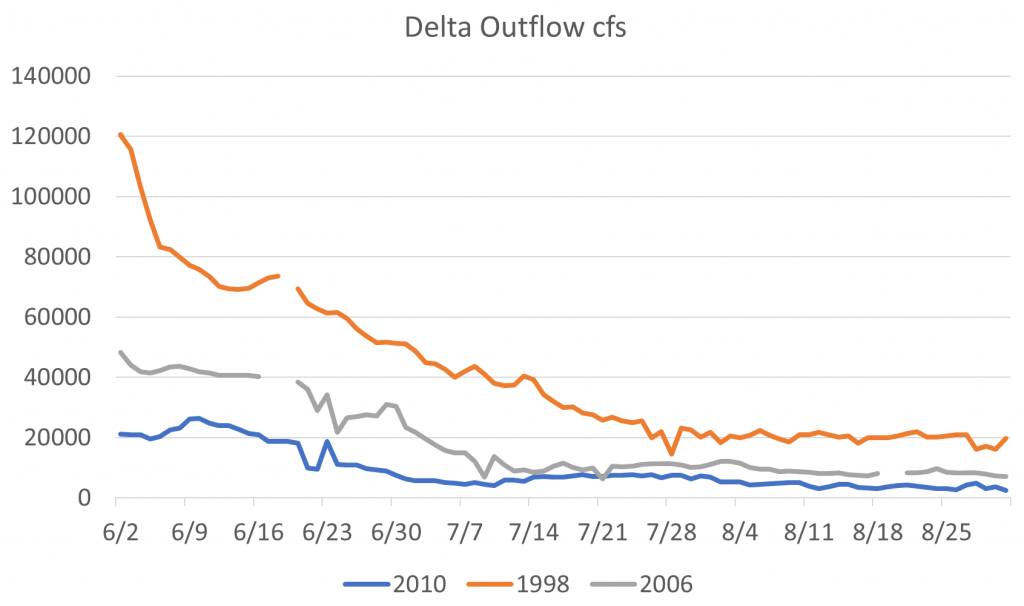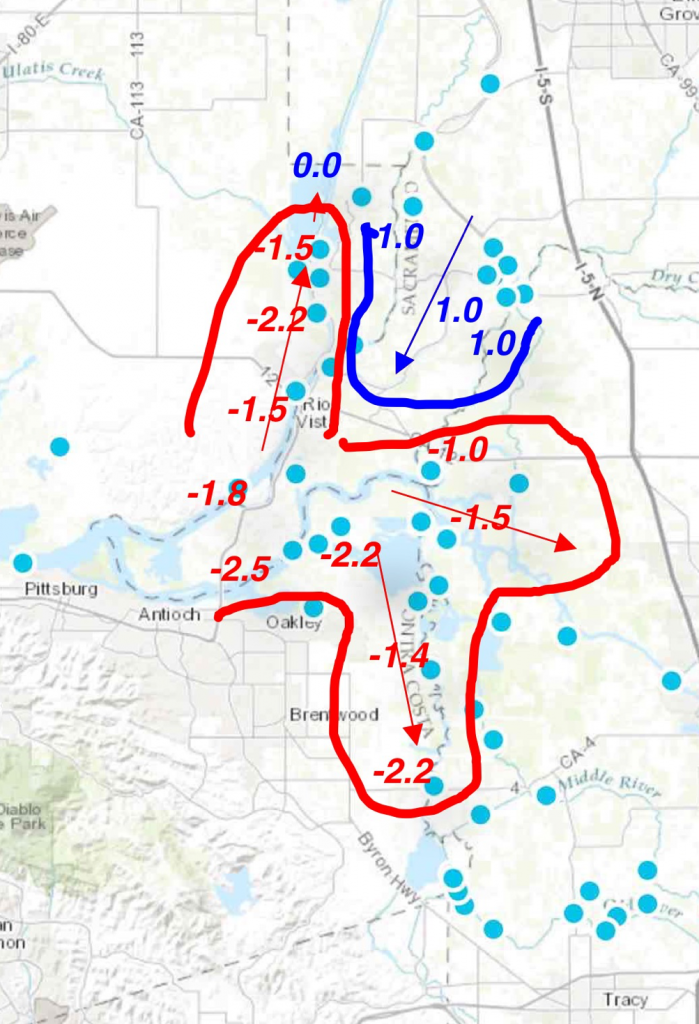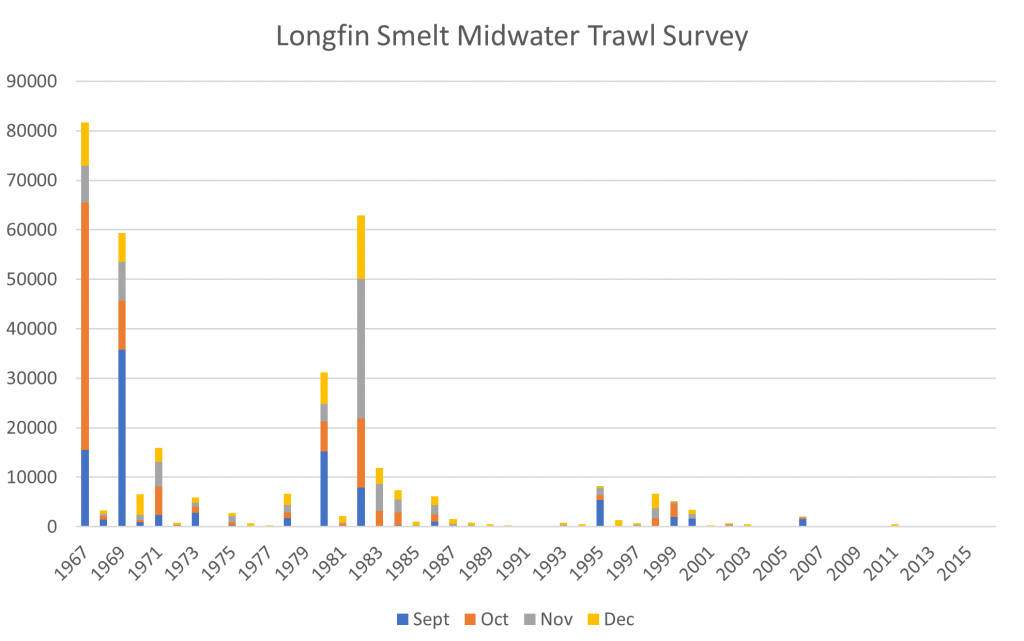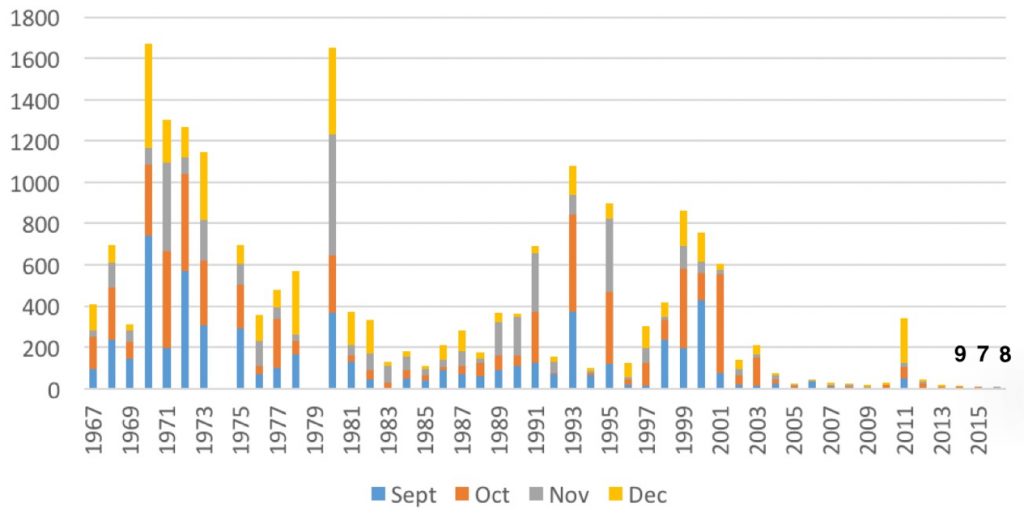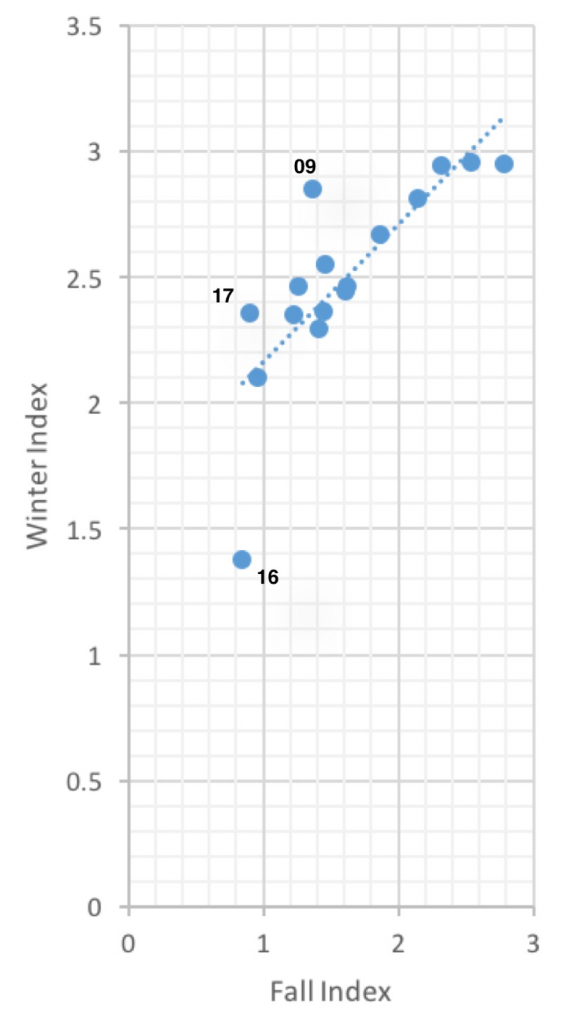The prognosis for splittail was not good in 20151 after four years of drought and little recruitment since 2011. The below-normal water year in 2016, with its limited winter flooding, brought no apparent recovery in the Fall Midwater Trawl Index (Figure 1). Summer salvage (Figure 2) indicated that there was some production in 2016, although salvage was two orders of magnitude lower than the previous normal water year 2010 (Figure 3) and three orders of magnitude less than the previous wet water year 2011 (Figure 4).
If water year 2017 were to continue on its current trajectory and become a wet year with widespread flooding, conditions for splittail spawning and rearing this winter and spring would be optimal. A positive response in salvage, Fall Midwater Trawl Survey, and FWS Seine Survey would indicate some form of recovery in the population. However, a lack of response on the order of that which occurred in 2011 would be a signal that the population is in dire straits and at risk of recruitment failure and eventual extinction. In the absence of a 2011-magnitude response in the next wet year, the fisheries agencies should conduct a comprehensive review to evaluate whether to re-list2 splittail under the federal and state endangered species acts.

Figure 1. Splittail Fall Midwater Trawl Survey Index 1967-2016. (Data Source3)

Figure 2. Splittail salvage in 2016. Export rate for federal and state pumping plants. (Source4)

Figure 3. Splittail salvage in 2010. Export rate for federal and state pumping plants. (Source5)

Figure 4. Splittail salvage in 2011. Export rate for federal and state pumping plants. (Source6)
- http://calsport.org/fisheriesblog/?p=1126 ↩
- Splittail were de-listed in 2003. On October 7, 2010, the USFWS found that re-listing of splittail was not warranted (75 FR 62070). The splittail is designated as a species of special concern by the California Department of Fish and Wildlife. ↩
- https://www.wildlife.ca.gov/Conservation/Delta/Fall-Midwater-Trawl ↩
- https://www.wildlife.ca.gov/Conservation/Delta/Salvage-Monitoring ↩
- https://www.wildlife.ca.gov/Conservation/Delta/Salvage-Monitoring ↩
- https://www.wildlife.ca.gov/Conservation/Delta/Salvage-Monitoring ↩

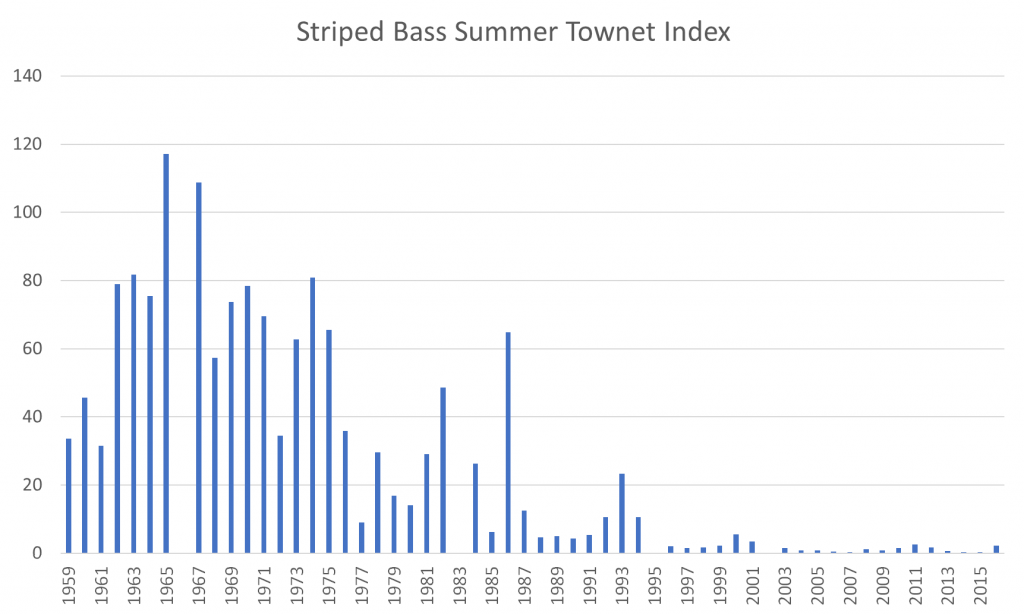
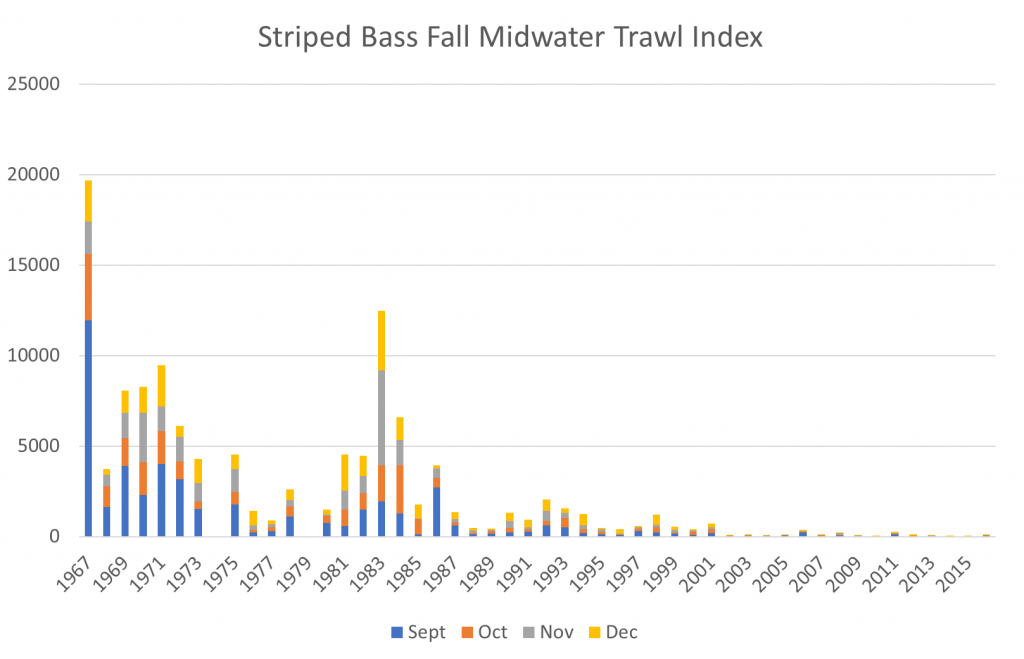


![Figure 5. Striped bass Fall Midwater Trawl Survey Index (log10[index+1]) versus prior Summer Townet Index (log10). Select years labeled, with color of number showing year type: blue=wet, green=normal, and red=critically dry.](http://calsport.org/fisheriesblog/wp-content/uploads/2017/01/figure-5-960x1024.png)
